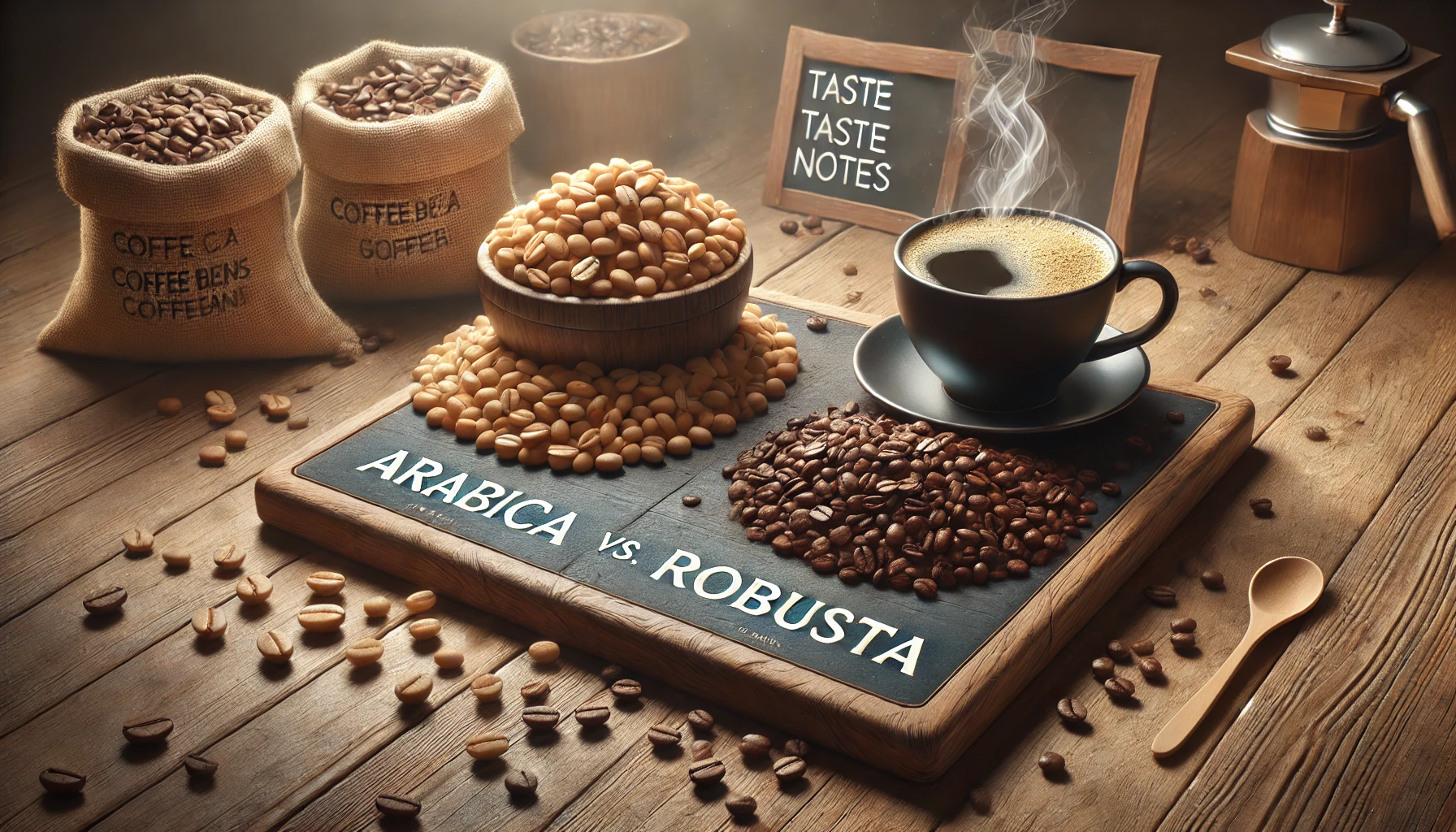When browsing coffee labels or shopping for beans, you’ve probably come across two terms repeatedly: Arabica and Robusta. These two species dominate the coffee world, and knowing the differences between them can greatly improve your coffee experience. Let’s break down everything you need to know—from flavor profiles to growing conditions—so you can choose your next cup with confidence.
What Are Arabica and Robusta?
Coffea Arabica and Coffea Canephora (commonly known as Robusta) are the two most cultivated species of coffee in the world. Though there are over 100 coffee species, these two account for more than 95% of global coffee production.
Each has its own unique set of characteristics, and they differ significantly in terms of taste, appearance, caffeine content, and cultivation.
Where They’re Grown
Arabica:
- Origin: Ethiopia (believed to be the first coffee species ever cultivated)
- Grown in: Latin America, parts of Africa, Asia
- Altitude: Prefers high elevations (600–2000 meters)
- Climate needs: Mild temperatures, shade, and regular rainfall
Robusta:
- Origin: Central and Western Africa
- Grown in: Vietnam, Brazil, parts of Africa and Indonesia
- Altitude: Thrives in lower elevations (200–800 meters)
- Climate needs: Hotter, more humid climates and is more resistant to pests and disease
Flavor and Aroma
The most important difference for the average coffee drinker is the taste.
Arabica:
- Flavor profile: Sweeter, softer, often with hints of fruit, sugar, chocolate, and floral notes
- Acidity: Higher acidity, which contributes to a complex flavor profile
- Body: Lighter and smoother
- Aftertaste: Clean and pleasant
Robusta:
- Flavor profile: Stronger, harsher, more bitter, with earthy, woody, or nutty undertones
- Acidity: Lower acidity
- Body: Heavier and sometimes gritty
- Aftertaste: Lingering and more intense
In blind taste tests, most people prefer the smoother, more balanced taste of Arabica—especially in black coffee. However, Robusta has its place, especially in espresso blends, where its boldness and crema-boosting qualities shine.
Caffeine Content
This is a major distinction:
- Arabica: Contains about 1.2–1.5% caffeine
- Robusta: Contains about 2.2–2.7% caffeine
Robusta has nearly double the caffeine of Arabica. This not only contributes to its stronger, more bitter taste but also makes it naturally more resistant to pests (insects don’t enjoy caffeine as much as humans do!).
For those who want a stronger kick of energy, Robusta might be the better option. But if you’re looking for flavor over stimulation, Arabica is usually the winner.
Appearance and Bean Shape
You can also distinguish Arabica and Robusta by looking at the beans:
- Arabica beans are oval with a curved crease down the middle.
- Robusta beans are rounder and smaller, with a straighter crease.
Roasters and baristas often use this physical difference to sort and identify the beans before and after roasting.
Cost and Availability
Arabica beans are generally more expensive to grow and purchase because:
- They require higher altitudes and specific climates
- They are more delicate, susceptible to disease
- The cultivation process is more labor-intensive
- They yield less coffee per plant
Robusta is easier and cheaper to cultivate, making it a cost-effective option for mass-market products. That’s why instant coffee and supermarket brands often contain a high percentage of Robusta.
Which One Should You Choose?
It depends on your taste, brewing method, and budget:
Choose Arabica if:
- You enjoy complex, smooth, aromatic flavors
- You brew coffee black (drip, pour-over, Chemex)
- You’re willing to pay a little more for quality
- You’re sensitive to bitterness or high caffeine
Choose Robusta if:
- You like strong, bold coffee with a caffeine punch
- You often add milk or sugar to your coffee
- You enjoy espresso and want more crema
- You prefer budget-friendly coffee options
Some coffee blends even combine Arabica and Robusta to balance flavor, body, and crema—especially in espresso.
Final Thoughts: It’s All About Your Preference
There’s no one-size-fits-all when it comes to coffee. While Arabica is generally considered superior in taste and aroma, Robusta has its own merits—especially for espresso lovers and those who need an extra caffeine boost.
The best way to decide? Try both. Experiment with different roasts, brewing methods, and origins. You might be surprised to find that a high-quality Robusta can impress just as much as an Arabica. Coffee is a personal journey, and understanding these two varieties is a great step toward discovering your perfect cup.
